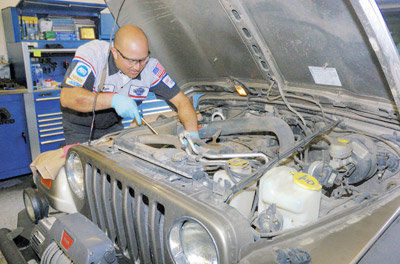
Most drivers have seen it, but many remain unsure what it really means when the check-engine light flicks on in the dash display.
Is it a true emergency, demanding an immediate call to a tow service — or just a nuisance?
Many people have driven hundreds or even thousands of miles with the light glaring back at them, braving the threat posed by the annoying signal.
To find out the truth behind the light, the Press-Banner asked Ryan Devonshire, an Automotive Service Excellence-certified master mechanic at Ernie’s Service Center in Felton.
“There are 25 (to) 45 different sensors that can cause the light to come on,” Devonshire explained. “Whether or not the light is warning you about a catastrophe is dependent on the light’s status.”
A blinking light
If the light blinks, the check-engine light means a catalyst-damaging fault code has been tripped. That means the engine systems are actively being damaged by continued use. In such a case, it’s important to stop driving as soon as possible and call a tow truck if needed. To avoid further damage, have the car diagnosed immediately.
A solid light
If the light turns on and stays solid and not flashing, it could mean any of a number of emissions-related problems, Devonshire said.
Your vehicle may be running like a 1954 jalopy, in which case the emission problems will, over time, foul things up. However, 98 percent of the time, it is safe to drive a while longer without damaging any critical engine systems.
The light might have turned on for something as simple as a faulty spark plug or air sensor. Devonshire said it could signify one of dozens of problems.
The bottom line is that the nagging light means it’s probably time to spend some money. Taking care of the problem expediently will save the car undue wear and tear, and down the road, that little light might just save the engine .
A light that turns itself off
In rare cases, the check-engine light might be tripped by a faulty sensor and could be something the owner corrects incidentally.
If, say, the trouble is a gas cap that is loose or missing, then when the gas cap is properly tightened, the light might go off.
A faulty sensor can cause problems if something actually does go wrong, though, and it still might be worthwhile to check out, at one’s convenience.












